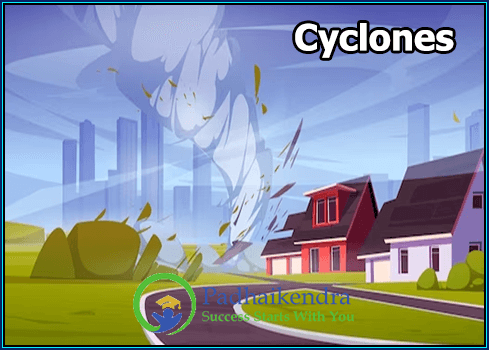Cyclones are large-scale atmospheric circulations characterized by low-pressure centers with circulating winds that spiral inward. They are also known as hurricanes or typhoons, depending on the region where they occur. Cyclones are one of the most powerful natural disasters and can cause significant damage to property and infrastructure, as well as loss of life.
Cyclones form over warm ocean waters where the temperature is above 26.5°C (80°F) and there is sufficient humidity and atmospheric instability. The warm ocean water provides the energy needed for the cyclone to develop and intensify. The rotating winds of the cyclone draw in more warm, moist air, which rises and cools, leading to the formation of clouds and precipitation.
As the cyclone intensifies, it can develop an eye, which is a region of relatively calm weather in the center of the storm. The eye is surrounded by a ring of intense thunderstorms known as the eyewall, which contains the strongest winds and heaviest rainfall.
Cyclones are classified based on their maximum sustained winds using the Saffir-Simpson Hurricane Wind Scale. This scale ranges from Category 1, with winds between 74-95 mph, to Category 5, with winds over 157 mph. The impacts of cyclones can vary depending on their intensity, size, and location. They can produce strong winds, storm surges, heavy rainfall, and flooding, which can cause extensive damage to coastal regions and inland areas.
To track and predict the movement of cyclones, meteorologists use a range of tools and techniques, including satellites, aircraft, and ground-based radar. This information is used to issue warnings and advisories to people in the path of the storm, allowing them to take appropriate safety measures.
Overall, cyclones are complex weather phenomena that require careful monitoring and preparation to minimize their impact on people and communities.





